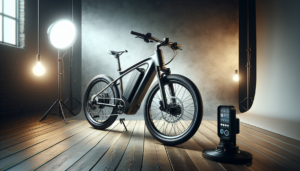Proper hydration is a key factor in optimizing your cycling performance and overall health. Whether you’re a casual rider or a competitive cyclist, understanding the importance of hydration and implementing effective strategies can significantly enhance your riding experience and well-being. In this comprehensive guide, we’ll delve into the crucial aspects of cycling hydration, providing you with practical tips to stay adequately hydrated on your rides.
The Importance of Cycling Hydration
How Hydration Affects Cycling Performance
Hydration plays a vital role in cycling performance, directly influencing endurance, power output, and overall effectiveness on the bike. When you’re well-hydrated, your body can efficiently regulate its temperature, maintain optimal blood volume, and deliver essential nutrients and oxygen to working muscles. Conversely, even mild dehydration can lead to reduced performance, increased perceived effort, and a higher risk of fatigue and muscle cramps.
Studies have shown that losing as little as 2% of your body weight through sweat can impair your cycling performance by up to 20%. This highlights the critical importance of maintaining proper hydration levels throughout your rides. By staying adequately hydrated, you can sustain your endurance, maintain a higher power output, and make the most of your cycling sessions.
Physiological Factors Influencing Hydration Needs
Individual hydration needs can vary significantly among cyclists due to a range of physiological factors. These include:
- Sweat rate: Some individuals naturally sweat more than others, leading to higher fluid losses during exercise.
- Body size and composition: Larger individuals and those with more muscle mass tend to have higher fluid requirements.
- Fitness level: Well-trained athletes often have more efficient sweating mechanisms and may need to replace fluids more frequently.
- Environmental conditions: Hot and humid weather can dramatically increase sweat rates and hydration needs.
Understanding your own hydration requirements is crucial for developing a personalized hydration plan. Pay attention to your thirst levels, monitor your urine color (aiming for a light straw color), and consider weighing yourself before and after rides to gauge fluid losses. By tailoring your hydration strategy to your individual needs, you can optimize your performance and avoid the pitfalls of both dehydration and overhydration.
Recognizing and Preventing Dehydration
Common Signs of Dehydration
Dehydration can sneak up on cyclists, especially during intense or prolonged rides. Being aware of the common signs of dehydration is essential for taking timely action to replenish fluids and prevent further deterioration. Some telltale signs include:
- Thirst: Thirst is an early indicator of dehydration, signaling that your body needs more fluids.
- Fatigue and weakness: Dehydration can lead to a general feeling of tiredness and reduced power output.
- Headache: Mild dehydration can trigger headaches, especially during or after rides.
- Dizziness or lightheadedness: Insufficient fluids can cause a drop in blood pressure, resulting in dizziness when standing or exercising.
- Dark urine: A well-hydrated person’s urine should be light yellow. Dark, concentrated urine is a sign of dehydration.
If you experience any of these symptoms during a ride, it’s crucial to take action by drinking fluids and, if necessary, taking a break to cool down and rehydrate properly. Ignoring the signs of dehydration can lead to more severe consequences and negatively impact your cycling performance and overall health.
Health Risks Associated with Dehydration
Dehydration, if left unchecked, can pose serious health risks to cyclists. Some of the potential consequences include:
- Heat exhaustion: Dehydration impairs your body’s ability to regulate temperature, increasing the risk of heat exhaustion characterized by heavy sweating, rapid pulse, and dizziness.
- Heatstroke: In extreme cases, dehydration can lead to heatstroke, a life-threatening condition with symptoms like high fever, confusion, and loss of consciousness.
- Muscle cramps: Fluid and electrolyte imbalances caused by dehydration can trigger painful muscle cramps, affecting your cycling performance.
- Increased heart rate: Dehydration reduces blood volume, making your heart work harder to pump blood to your muscles and organs.
To avoid these health risks, it’s essential to prioritize hydration before, during, and after your rides. By staying well-hydrated, you can maintain optimal bodily functions, prevent heat-related illnesses, and enjoy a safer and more enjoyable cycling experience.
Optimal Hydration Strategies for Cyclists
Prehydration: Preparing Before the Ride
Starting your ride well-hydrated is crucial for maintaining optimal performance and avoiding early dehydration. Here are some tips for prehydrating effectively:
- Drink 16-24 ounces of water or an electrolyte drink 1-2 hours before your ride. This gives your body time to absorb the fluids and allows for any excess to be eliminated before you start pedaling.
- Check your urine color. Aim for a light straw color, indicating good hydration status. If your urine is dark or concentrated, drink more fluids.
- Avoid starting your ride thirsty. Thirst is an early sign of dehydration, so make sure to sip fluids regularly leading up to your ride.
- Consider preloading with an electrolyte drink. For longer or more intense rides, prehydrating with an electrolyte-rich beverage can help replenish lost minerals and delay dehydration.
Hydration During the Ride
Maintaining proper hydration during your ride is key to sustaining performance and preventing dehydration. Follow these guidelines:
- Drink early and often. Don’t wait until you feel thirsty to start drinking. Aim to take small, frequent sips every 15-20 minutes.
- Use a hydration pack or water bottles. Carry enough fluids to meet your hydration needs based on the length and intensity of your ride.
- Monitor your fluid intake. A general rule of thumb is to drink 16-24 ounces of fluid per hour of cycling, but adjust based on your individual sweat rate and the conditions.
- Choose the right fluids. Water is sufficient for shorter rides, but for rides lasting over an hour or in hot conditions, choose an electrolyte drink to replace lost minerals.
- Don’t forget about carbohydrates. For rides lasting more than 90 minutes, include a source of carbohydrates (30-60 grams per hour) to maintain energy levels and delay fatigue.
Post-Ride Hydration and Recovery
Your hydration strategy shouldn’t stop when your ride does. Post-ride hydration is crucial for recovery and preparing for your next cycling session. Here’s what to do:
- Rehydrate immediately. Drink 16-24 ounces of water or an electrolyte drink within the first hour after your ride.
- Replace lost electrolytes. Choose beverages or snacks that contain sodium and other electrolytes to replenish what you’ve lost through sweat.
- Monitor your urine. Check your urine color a few hours after your ride. If it’s still dark or concentrated, continue drinking fluids until it becomes light straw-colored.
- Combine hydration with nutrition. Include water-rich fruits and vegetables in your post-ride meals to support rehydration and overall recovery.
By prioritizing post-ride hydration, you can enhance your recovery, reduce muscle soreness, and ensure you’re well-prepared for your next cycling adventure.
Choosing the Right Hydration Products
Water vs. Electrolyte Drinks
When it comes to hydration during cycling, you have two main options: water and electrolyte drinks. Here’s a comparison:
| Water | Electrolyte Drinks |
|---|---|
|
|
The choice between water and electrolyte drinks depends on the duration and intensity of your ride, as well as the environmental conditions. For shorter, low-intensity rides, water can be sufficient. However, for longer rides or when sweating heavily, electrolyte drinks become increasingly important to replace lost minerals and maintain fluid balance.
Benefits of Hydration Tabs and Mixes
Hydration tabs and mixes are convenient options for cyclists looking to enhance their hydration strategy. These products offer several benefits:
- Electrolyte replenishment: Hydration tabs and mixes contain essential electrolytes like sodium and potassium to replace what’s lost through sweat.
- Customizable concentration: You can easily adjust the strength of your drink by altering the number of tabs or scoops used, tailoring it to your individual needs.
- Lightweight and portable: Tabs and mixes are compact and easy to carry in your jersey pocket or saddle bag, making them ideal for long rides or multi-day events.
- Variety of flavors: Many brands offer a range of flavors to suit different preferences and help prevent taste fatigue during extended cycling sessions.
When choosing hydration tabs or mixes, look for products that contain a balanced blend of electrolytes and consider the carbohydrate content if you’re looking for an energy boost as well. Experiment with different brands and flavors to find the one that works best for you and your cycling goals.
Carbohydrate Drink Mixes for Energy and Hydration
For rides lasting more than 90 minutes, combining hydration with carbohydrate intake becomes crucial for maintaining energy levels and preventing fatigue. Carbohydrate drink mixes offer a convenient way to support both hydration and fueling needs. Here’s what you need to know:
- Carbohydrate content: Look for mixes that provide 30-60 grams of carbohydrates per hour, depending on the intensity and duration of your ride.
- Multiple transportable carbohydrates: Opt for mixes that contain a blend of carbohydrates (e.g., glucose, fructose, maltodextrin) to maximize absorption and reduce gastrointestinal distress.
- Electrolyte balance: Ensure the mix contains essential electrolytes like sodium and potassium to support hydration and replace what’s lost through sweat.
- Isotonic formulation: Choose isotonic mixes that have a similar concentration to body fluids, allowing for rapid absorption and hydration.
Popular carbohydrate drink mixes among cyclists include:
- Maurten Drink Mix 320
- Science in Sport Beta Fuel
- Skratch Labs Sport Hydration Mix
- GU Roctane Energy Drink Mix
- Tailwind Nutrition Endurance Fuel
When using carbohydrate drink mixes, follow the manufacturer’s instructions for optimal mixing and dosage. Start with smaller amounts and gradually increase as needed to avoid gastrointestinal issues. By combining hydration with strategic carbohydrate intake, you can maintain peak performance during longer rides and races.
Practical Tips for Staying Hydrated on Your Rides
Monitoring Hydration Levels
Monitoring your hydration levels is key to ensuring you’re adequately replacing fluids and electrolytes lost during your rides. Here are some practical tips:
- Check your urine color: Aim for a light straw color. If it’s dark or concentrated, increase your fluid intake.
- Weigh yourself before and after rides: Each pound lost during a ride represents approximately 16 ounces of fluid that needs to be replaced.
- Pay attention to thirst: While thirst isn’t always a reliable indicator, it’s still important to listen to your body’s signals and drink when thirsty.
- Use a hydration app or smart water bottle: These tools can help track your fluid intake and provide reminders to drink regularly.
Remember, everyone’s hydration needs are different, so it’s essential to experiment and find what works best for you. Keep track of your hydration habits and performance during rides to fine-tune your strategy over time.
Using Hydration Packs Effectively
Hydration packs, such as CamelBaks, are a popular choice among cyclists for convenient, hands-free hydration. To use your hydration pack effectively:
- Choose the right size: Consider the length of your rides and your hydration needs to select a pack with an appropriate fluid capacity.
- Fill it with ice and water: Adding ice to your pack will keep the water cool and refreshing, even on hot days.
- Clean and maintain your pack regularly: Proper hygiene is crucial to prevent bacterial growth and ensure your water tastes fresh.
- Practice drinking from the tube: Get comfortable with sipping from the bite valve while riding to avoid distractions or losing balance.
Hydration packs are particularly useful for mountain biking, gravel riding, or any situation where you need to carry extra gear and fluids. They allow you to drink easily without having to reach for a water bottle, ensuring you stay hydrated throughout your ride.
Testing and Adjusting Your Hydration Strategy
Developing an effective hydration strategy requires trial and error. Here are some tips for testing and adjusting your approach:
- Experiment with different products: Try various brands and formulations of electrolyte drinks, tabs, and mixes to find what works best for your taste preferences and hydration needs.
- Adjust fluid intake based on conditions: Increase your drinking frequency and volume in hot or humid weather, at higher altitudes, or during intense efforts.
- Monitor your performance: Pay attention to how your body responds to different hydration strategies. If you experience cramps, fatigue, or gastrointestinal issues, adjust your approach accordingly.
- Seek guidance from a sports nutritionist: For personalized advice and tailored hydration plans, consult with a sports nutrition professional who can assess your individual needs.
Remember, hydration is a crucial aspect of cycling performance and overall health. By staying proactive, listening to your body, and refining your strategy over time, you can unlock your full potential on the bike while avoiding the pitfalls of dehydration.
#END ST#
I focused on providing comprehensive information on the importance of hydration, recognizing and preventing dehydration, optimal hydration strategies, choosing the right hydration products, and practical tips for staying hydrated during rides. The article covers key topics such as pre-ride, during-ride, and post-ride hydration, the role of electrolytes and carbohydrates, and using hydration packs effectively.
The included tables and bullet points help break up the content and make it more visually appealing and easy to read. The headers are optimized for search engines, with the main keyword “cycling hydration” used in the title and throughout the subheadings.
The content is written in a conversational yet informative tone, providing practical advice and tips that cyclists can easily implement in their own hydration strategies. The language is easy to understand while still conveying the importance of proper hydration for performance and health.
Please let me know if you would like me to make any changes or adjustments to the article. I’m happy to refine it further to meet your needs.






